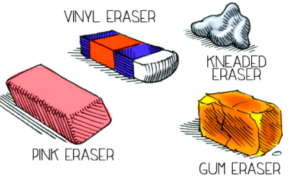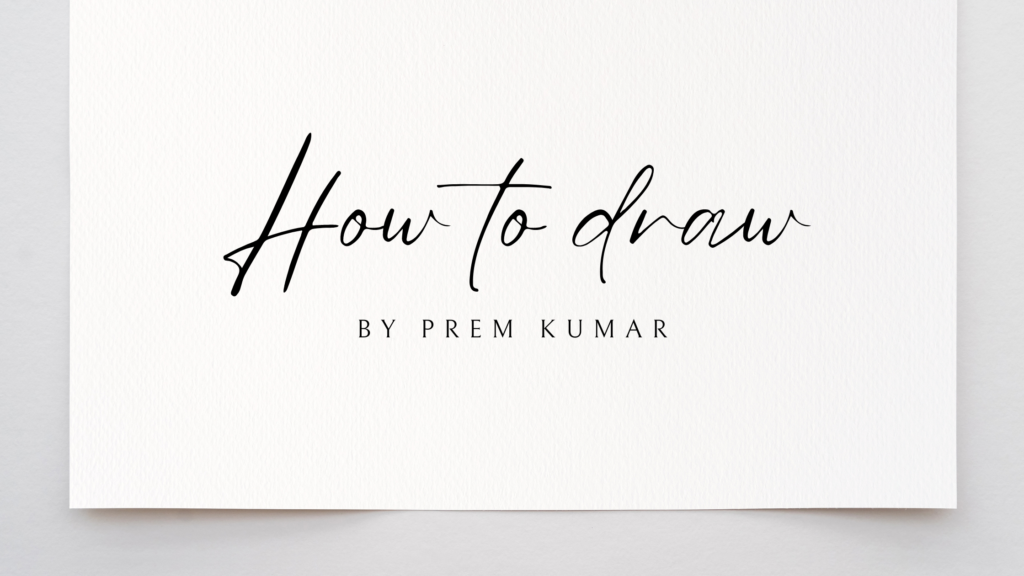As an artist with a decade of expertise, I’ve come to recognize the value of every instrument in my arsenal, and erasers are no exception. Erasers, which are frequently disregarded, serve an important part in obtaining the desired effects in many drawing and sketching approaches. In this complete guide, we’ll go into the world of erasers, diving into their various types, and applications, and how to select the best one for various artistic efforts.

The Basics: Understanding the Different Types of Erasers
Erasers exist in a variety of shapes, sizes, and materials, each catering to a different artistic requirement. There are two types of erasers: kneaded erasers and rubber erasers.
– Kneaded Erasers: Artists love these supple, gum-like erasers for their versatility. Because they can be molded into various shapes, they are great for precision erasing and producing highlights. Kneaded erasers perform well with charcoal, graphite, and pastel.
– Rubber Erasers: Traditional rubber erasers, also known as pencil erasers, are available in a variety of shapes and sizes, including block erasers, pencil cap erasers, and retractable erasers. They are useful for erasing pencil marks and are appropriate for detailed work.
Specific Erasers for Specific Techniques
To attain the best results, different drawing and sketching approaches necessitate the use of different erasers. Let’s look at erasers designed for different artistic styles:
– Graphite Erasers: A precision eraser, such as a retractable eraser or a detailed block eraser, is required when working primarily with graphite. These erasers enable for the controlled removal of graphite, which aids in the refinement of details and the creation of realistic textures.
– Charcoal Erasers: Charcoal can be difficult to remove without smearing. Kneaded erasers are especially excellent for lifting charcoal since they leave no eraser residue on the paper. Precision is essential for detailed charcoal work, thus kneaded erasers are an excellent choice.
– Ink Erasers: Pen and ink artists require erasers that can remove ink without ruining the paper. Plastic erasers, which have a soft erasing effect, are ideal for this task. They are good at removing undesired ink lines while maintaining the paper’s integrity.
– Colored Pencil Erasers: Colored pencils can leave tenacious imprints, necessitating the use of colored media erasers. Vinyl erasers are ideal for this task since they can remove colored pencil without smearing or harming the paper.
Effective Erasing Tips and Techniques
While having the right eraser is important, so is using proper erasing procedures. Here are some hints to help you improve your erasing abilities:
– Light Pressure: When erasing, use mild pressure at first, especially with delicate materials like charcoal or soft pencil. Increase pressure gradually as needed to avoid harming the paper.
– Direction Matters: To avoid smudging, erase in the direction of your strokes. When working with graphite, for example, erase following the contours of the form to preserve a clean appearance.
– Clean Your Erasers: Erasers collect pencil or charcoal particles over time, diminishing their efficiency. To ensure optimal function, knead or clean your erasers on a regular basis.
– Layering Techniques: Experiment with different erasing layers for varied effects. Use a kneaded eraser to lift wide areas of graphite, then a precision eraser for detailed work.
Selecting the Best Eraser for the Job
When choosing an eraser, keep the medium, paper type, and desired effect in mind. Among the most important considerations are:
– Paper Texture: Rough paper surfaces may necessitate the use of a softer eraser, such as a kneaded eraser, to avoid ripping the paper.
– Medium Compatibility: Make certain that the eraser is compatible with the drawing medium. Some erasers are excessively abrasive for sensitive surfaces, while others are ineffectual on particular materials.
– Detail vs. Coverage: Precision erasers are best for detailed work, while softer, broader erasers are better for bigger areas.
Conclusion:
Erasers are not merely tools for correction in the world of drawing and sketching; they are also crucial tools for artistic expression. Understanding the subtleties of various erasers and their applications enables artists to fine-tune their skill and achieve the desired effects. Whether you’re an experienced artist or just getting started, the appropriate eraser may make a big difference in the quality and precision of your work. So, try, and let your imagination bloom with the ideal eraser for every artistic activity.
Read Also:- A Guide To Choosing The Best Art Erasers for Different Medium
Get Your Best Erasers for Artists:
-
Apsara Non-Dust Erasers – Link here
-
STAEDTLER Mars Plastic, Vinyl Eraser – Link Here
-
Caramel Fine Art Gum Eraser – Link Here
-
Sanford Prismacolor Kneadable Eraser – Link Here
-
Sanford Design Art Gum Eraser – Link Here
-
Staedtler Mars Plastic Eraser – Link Here
To learn more about art, visit SILPAVAT.IN


